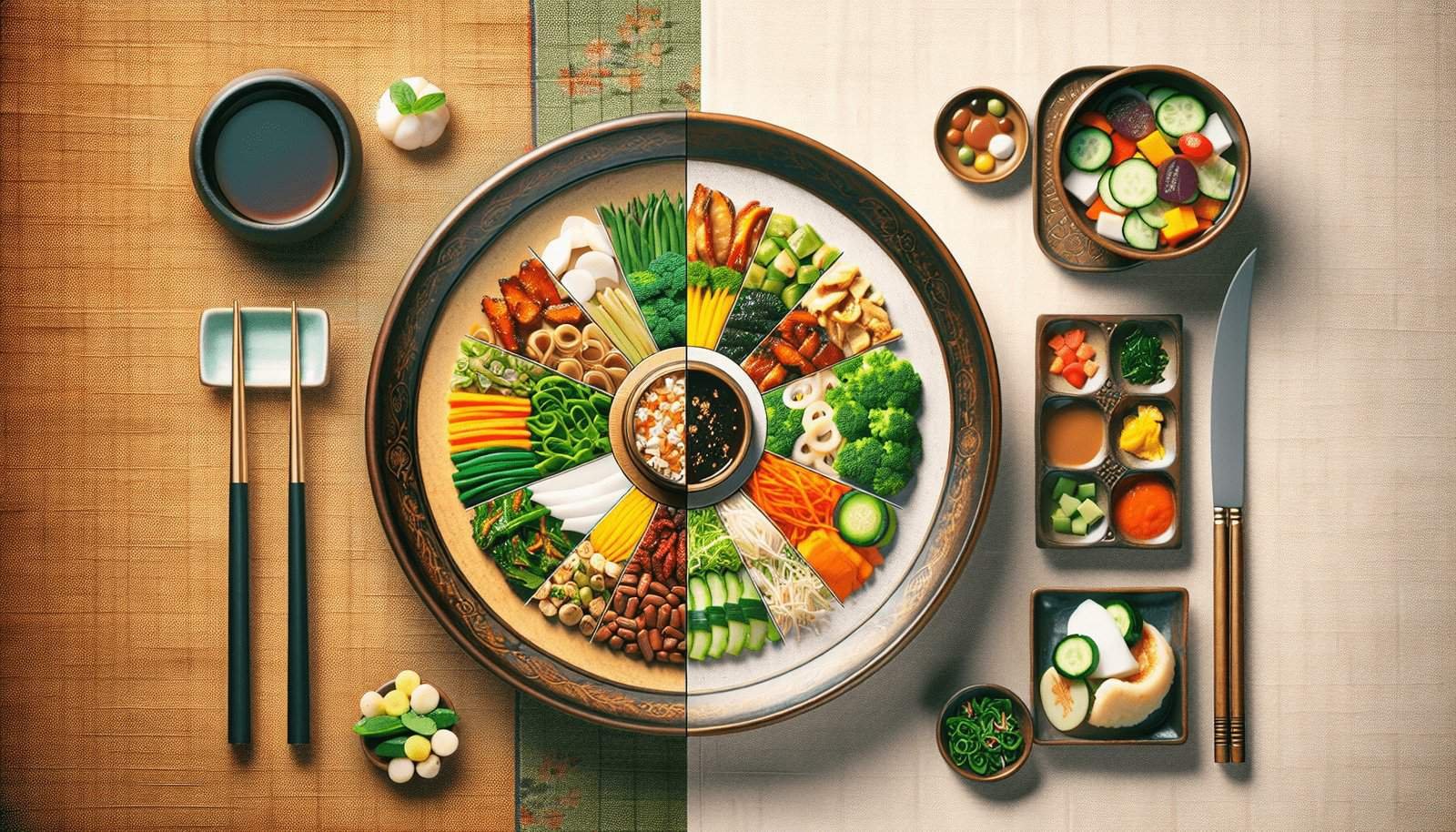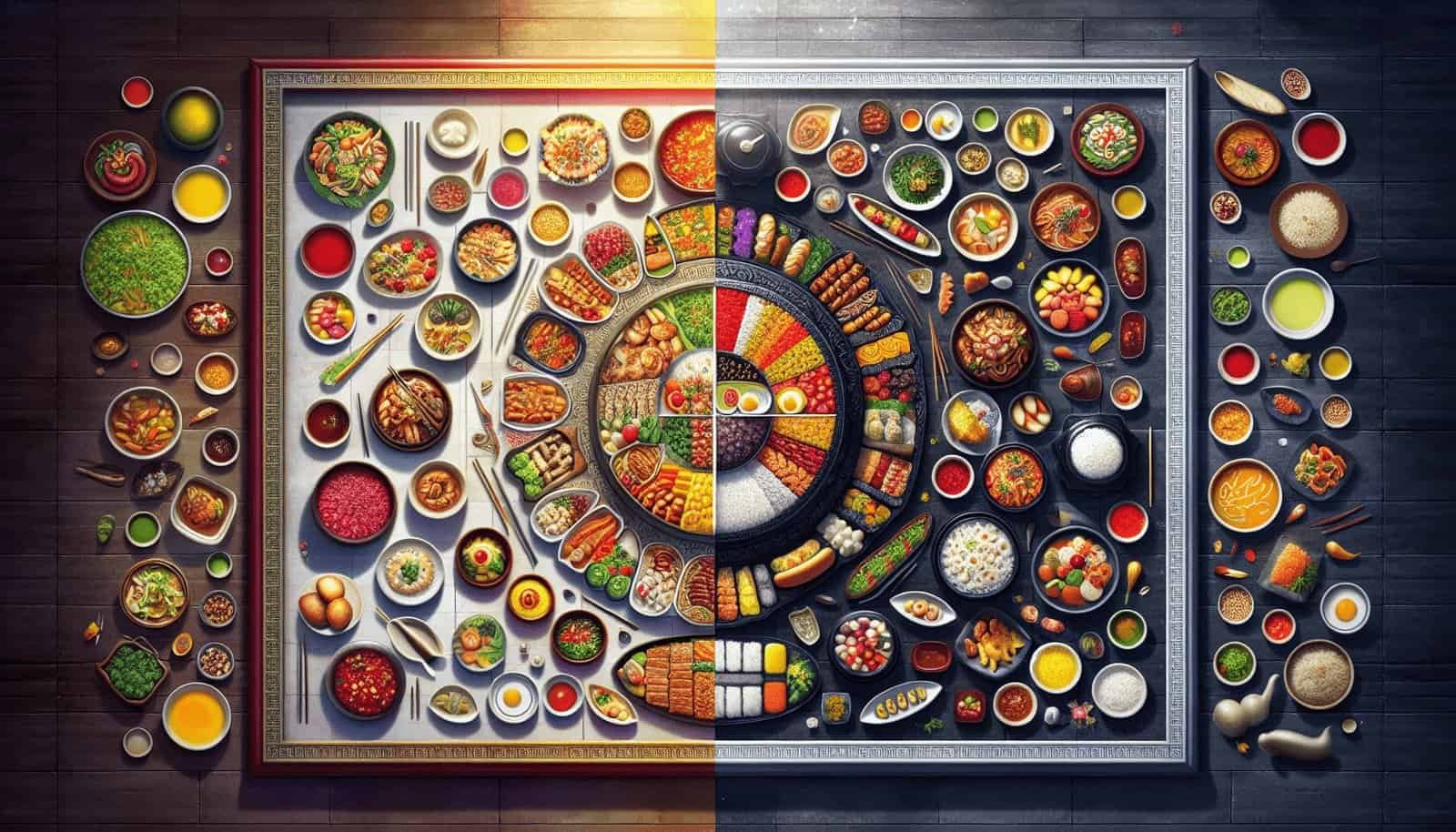In the fascinating world of Korean cuisine, there exists a hidden gem known as traditional Korean temple cuisine. This unique culinary tradition is vastly different from the regular Korean fare that we are familiar with. Traditional Korean temple cuisine holds a captivating story intertwined with heritage and spirituality, offering a truly remarkable dining experience. Let’s embark on a culinary journey to discover the secrets behind this extraordinary cuisine and explore the distinctive features that set it apart from the rest of Korean gastronomy.
Ingredients
Traditional Korean temple cuisine, also known as “Sunsik,” places a strong emphasis on vegetable-focused dishes. Unlike regular Korean fare, which may include a variety of animal products, temple cuisine strictly avoids the use of any animal ingredients. This commitment to vegetarianism aligns with the Buddhist principle of non-violence and prohibits the killing of animals for food. In addition, temple cuisine prioritizes the use of seasonal and local ingredients, ensuring that the dishes are not only delicious but also sustainable and environmentally friendly.
Cooking Methods
When it comes to cooking methods, traditional Korean temple cuisine follows certain guidelines. Frying and grilling, which are commonly used in regular Korean cuisine, are avoided. Instead, steaming, boiling, and fermenting techniques are favored. These methods help to preserve the natural flavors and nutritional content of the ingredients. Additionally, temple cuisine utilizes minimal amounts of oil and spices, allowing the true essence of the vegetables to shine through.

Buddhist Principles
Buddhist principles heavily influence traditional Korean temple cuisine. Mindful eating is an integral part of Buddhist practice, and this concept is reflected in the way food is prepared and consumed in temples. Every step of the cooking process, from ingredient selection to meal presentation, is carried out with mindfulness and gratitude. The prohibition of killing extends not only to animals but also to plants, as temple cuisine emphasizes the protection of all life. This commitment to non-violence is embodied in the careful and compassionate preparation of each dish.
Jesa Rituals
Jesa, or ancestral rites, play a significant role in Korean culture, including its cuisine. These rituals involve offering food and ancestral worship to honor deceased family members. In traditional Korean temple cuisine, certain dishes are specifically prepared for these rituals. These offerings are seen as a way to nourish and express gratitude to the ancestors. The influence of Jesa rituals on temple cuisine highlights the deep connection between food, spirituality, and the preservation of cultural heritage.

Complex Flavors
Traditional Korean temple cuisine is characterized by its subtle and mild taste. Unlike the bold and fiery flavors commonly found in regular Korean fare, temple cuisine aims for a more balanced and harmonious flavor profile. The use of fermented ingredients, such as soybean paste and soy sauce, adds natural umami to the dishes, resulting in a deep and complex flavor experience. Each ingredient is carefully selected and prepared to create a sensory journey that delights the palate without overwhelming the senses.
Health Benefits
In addition to its unique flavors, traditional Korean temple cuisine offers numerous health benefits. The emphasis on vegetable-focused dishes ensures that the meals are high in nutrients and fiber, contributing to overall well-being. By eliminating animal products, temple cuisine naturally reduces the intake of fat and calories, making it a great option for those looking to maintain a healthy weight. The mindful and intentional preparation of each dish further enhances the nutritional value, creating meals that nourish both the body and the spirit.

Presentation
The presentation of food in traditional Korean temple cuisine goes beyond simply satisfying hunger; it is a visual experience. Simplicity and beauty are at the forefront of meal aesthetics. Each dish is carefully arranged to be aesthetically pleasing, reflecting the principles of balance and harmony. Vibrant and colorful vegetables are used to create visually appealing dishes that are both inviting and delightful. The meticulous attention to detail in the presentation of temple cuisine reflects the reverence and respect for the food, elevating the dining experience to a sensory delight.
Meal Structure
Within the temple, meals are not only a physical nourishment but an integral part of the daily routine and spiritual practice. It begins with simple and formal meal etiquette, where practitioners offer gratitude for the food before consuming it. Meals are typically served in multiple small dishes, allowing for gradual consumption and appreciation of each dish’s unique flavors and textures. This deliberate and mindful approach to eating encourages a meditative state, enabling practitioners to deepen their connection to their food and cultivate gratitude for each bite.

Seasonal Variations
To fully embrace the Buddhist principle of impermanence and connection with nature, traditional Korean temple cuisine adapts to the seasons. This means changing menus throughout the year based on the availability of seasonal produce. Freshly harvested herbs and greens are incorporated into the dishes, enhancing both the flavor and nutritional value. Embracing the ever-changing nature of the seasons allows for a deeper connection with the natural world and a profound appreciation for the gifts it provides.
Cultural Significance
Traditional Korean temple cuisine holds immense cultural significance in Korea. It is deeply rooted in Buddhism and spirituality, serving as a means of cultivating mindfulness and gratitude. Through the preservation of traditional culinary heritage and reliance on wholesome, plant-based ingredients, temple cuisine embodies the Buddhist principles of non-violence, compassion, and reverence for all life. The practice of temple cuisine not only nourishes the body but also strengthens the cultural identity and connection to Korean heritage, serving as a reminder of the importance of mindful eating and gratitude in our daily lives.

